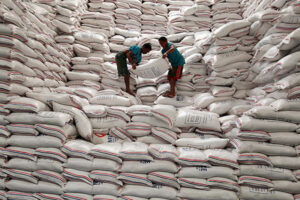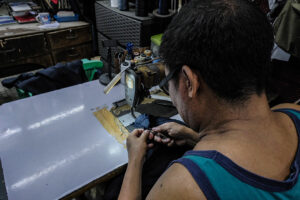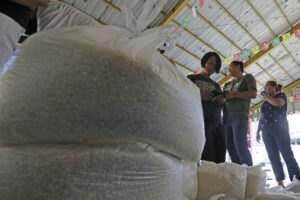CONGRESSMEN on Wednesday said the decision to slash the tariff rate on rice imports would make rice cheaper for Filipinos.
However, the government should look into effectively implementing rice support programs under the Rice Competitiveness Enhancement Fund (RCEF) to mitigate the effect of the lower rice tariff rate, which is used to finance the rice fund.
“Inflation is still determined and felt primarily through rice prices. So, the decision to reduce tariff rates on rice is the most intuitive step forward,” Albay Rep. Jose Ma. Clemente S. Salceda told BusinessWorld in a Viber message. “We should ramp up the implementation of programs under the Rice Competitiveness Enhancement Fund, so we cushion the impacts of lower rice tariffs on the domestic sector.”
The government on Tuesday agreed to slash the tariff imposed on rice products to 15% from 35% as part of efforts to reduce the price of the staple food.
Well-milled rice sold on the last day of May averaged P48 to P55 per kilo while regular milled rice ranged around P45 to P52 per kilo.
“This is why I am hopeful that the reduction of the tariff rates will have a significant impact on the high price of rice,” Deputy Minority Leader and Basilan Rep. Mujiv S. Hataman said in a statement. “Many cannot afford to buy rice costing more than P50.”
Mr. Hataman said he hopes that the reduction in rice tariffs would immediately reduce the retail prices of the staple product. “We hope that this would bear fruit… so the people could buy cheap rice immediately,” he said in Filipino.
“The import levy reduction and the direct sale of imported rice by the government through its Kadiwa centers should bring down the retail price of rice substantially, especially for consumers,” House Speaker and Leyte Rep. Ferdinand Martin G. Romualdez said in a separate statement.
The government has already accumulated P16 billion worth of rice tariff collections, he said, which is enough to fund farmer assistance programs. “This means that the government has enough funds to help farmers, while it is trying to bring down rice prices through the import tariff cut and direct Kadiwa sales.”
The Kadiwa program is a marketing initiative by the DA allowing direct farm-to-consumer access. — Kenneth Christiane L. Basilio





